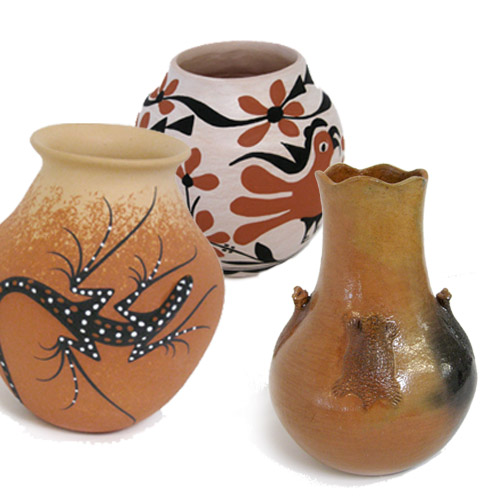Find out about the customs, culture and history of the Pawnees.
The Pawnee Nation had existed in relative peace and tranquillity in the wilds of Nebraska for hundreds of years prior to the arrival of the white man. At their peak they numbered about 10,000 people. The nation was divided into four distinct bands: the Chaui, the Kitikahki, the Petahauirita and the Skidi. The bands lived as independent units.
Around 1850 the Pawnee nation had been decimated by an outbreak of smallpox and cholera. By the dawn of the 20th Century the total number of Pawnees totalled no more than 600.
The Pawnee lived in dome shaped huts. These homes were covered with earth and had a central pit for a fire. The buildings were up to 15 feet in height. Often extended families would cohabit together in large huts. The villages would be situated along a river. The advent of the horse allowed the farming Pawnees to chase the buffalo. When the people were on the buffalo hunt they would live in tipis. Tipis were large, with about 11 lodge poles. They could house up to 18 people. The tipi had a smoke hole for cooking.
Prior to the arrival of the horse, the people lived in permanent villages and farmed the ground. Any hunting was done with dogs who carried packs or pulled travois. The traditional clothing of the Pawnee consisted of moccasins made from otter skins with Buffalo skin serving as the main material for clothing. In warmer climates the men would wear loin cloths. In winter Buffalo robes and long leather pants were added. The men would wear a second belt in addition to the one which held up their loincloths. This belt would be used to hang their tomahawks, knives and guns.
Females would wear skirts and moccasins in the summer time. In winter they would wear buckskin dresses with leggings. Both men and women would pierce their ears and wear ornate beaded earrings. Social order dictated that the men were the traditional hunters and gatherers. Men often took more than one wife. The women, as in most Indian tribes, were very hard workers. It was they who cultivated the soil and worked the hide of the buffalo. The Pawnee were a close family unit. Children in the villages were treated as belonging to everyone.
The Pawnee were excellent hunters. Their abilities with the bow and arrow were finely honed. As well as buffalo they would hunt for raccoons, quail, skunks and prairie chickens. Food consisted of buffalo meat and corn. In fact, the buffalo was richly utilised, with no part of the animal going to waste. Even the stomach lining of the animal was utilised for cooking vessels and water pails.
The Pawnee took delight in decorating their homes. Porcupine quills would be used to decorate tipis, earthen houses and clothing. Magic was also an important part of Pawnee life. The medicine man would perform ceremonies to regulate the weather which was so important to the life of these farming people. Spiritual beliefs centered around the belief in Tiriwa, the maker of earth and the heavenly bodies. The stars seen at night were seen to be Gods.
The Pawnee men proved themselves as valiant fighting men. They were not overtly aggressive people but were well known for their abilities to raid neighboring peoples and stealing their horses. The acquiring of horses made the Pawnees even more formidable raiders. There has never been warfare between the United States Government and the Pawnee nation. They have also been considered by the United States as a friendly nation. Ironically, this friendly status has worked against them in a round about way. Warring neighbours of the Pawnee were often placated with gifts of rifles with which to hunt Buffalo. More often than not, however, such weapons were used against the enemies of these tribes, including the Pawnee.
The Pawnee entered into agreements to cede their lands to the United States Government in 1833, 1848, 1857 and 1872. In 1875 they were moved from Nebraska to the Pawnee Indian Agency. Today the official count of Pawnee is put at just over two thousand, five hundred people.
Friday, 8 October 2010
Subscribe to:
Post Comments (Atom)


1 comment:
this is very interesting for a particular website
Post a Comment